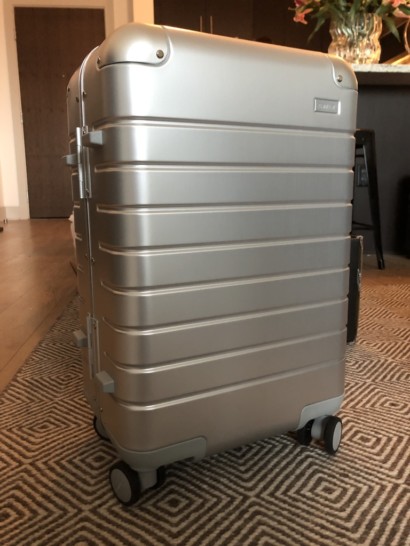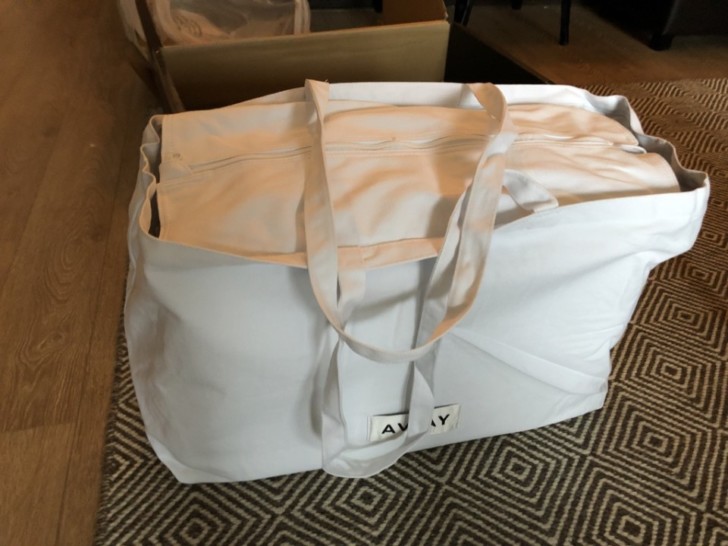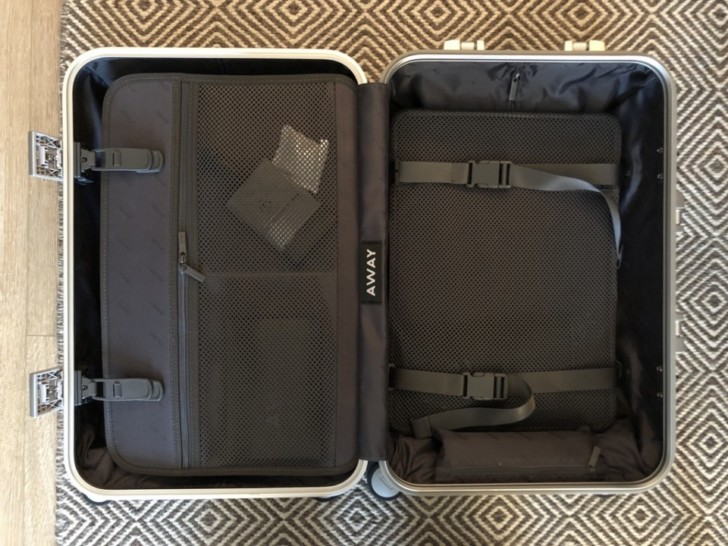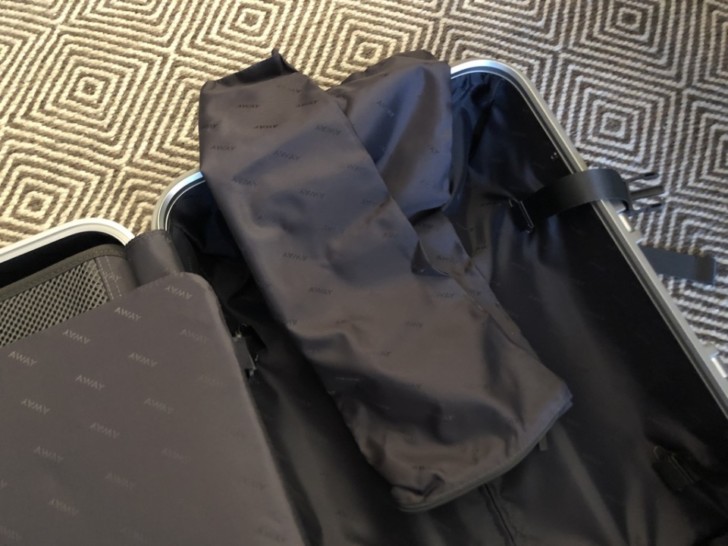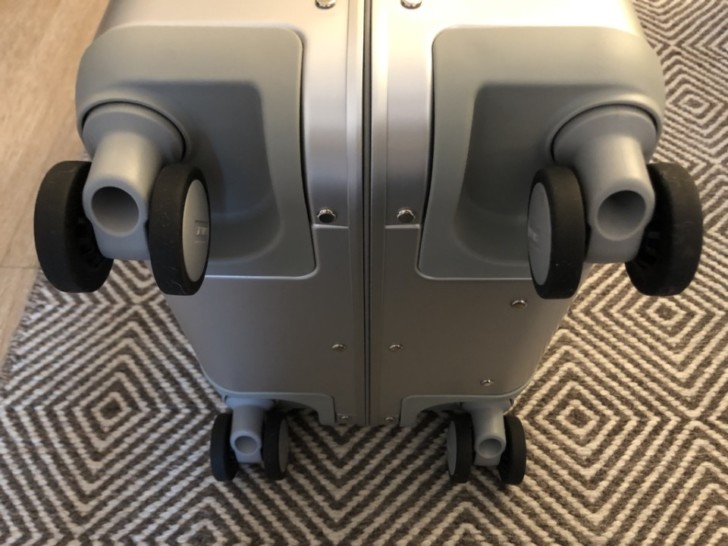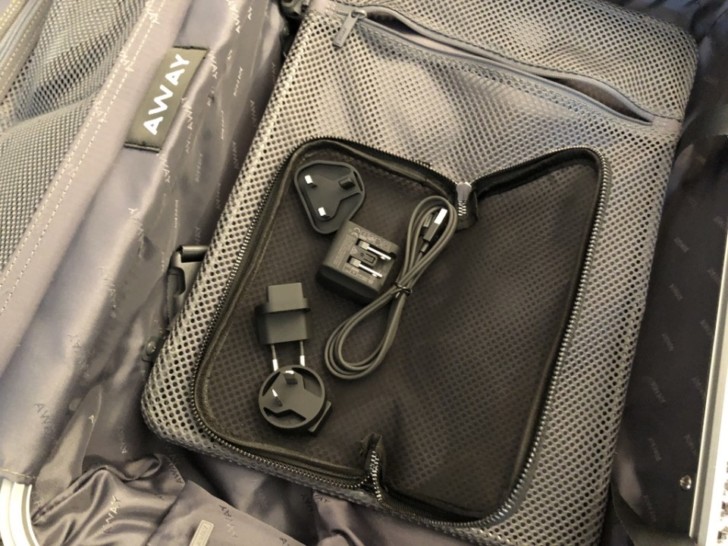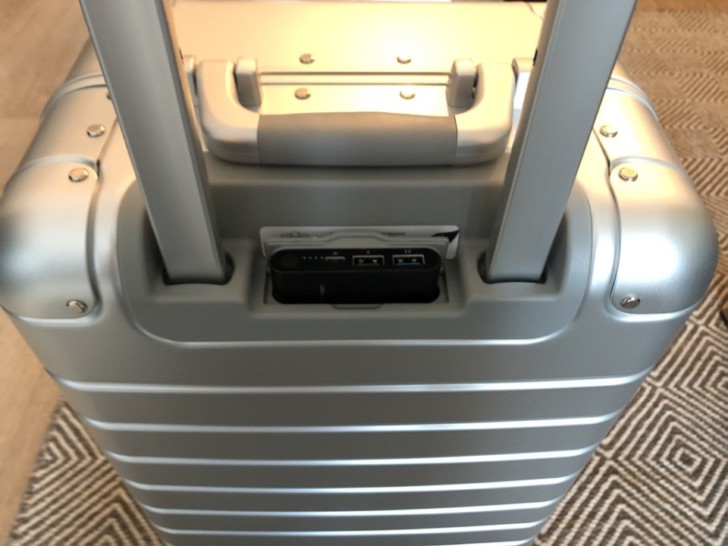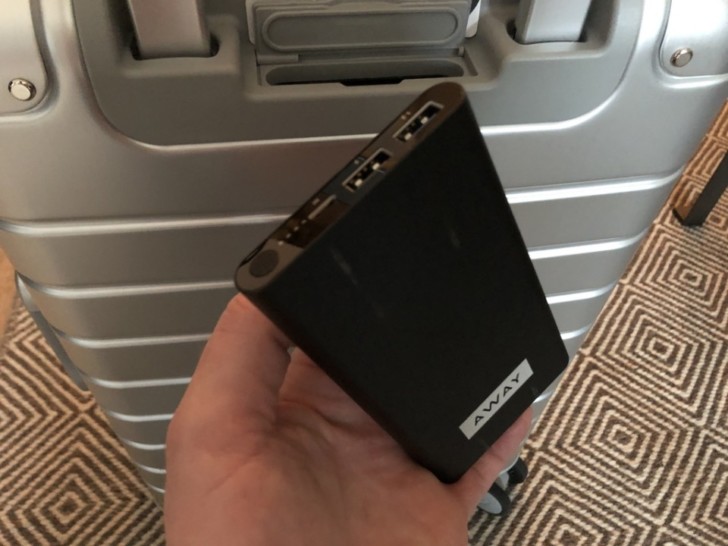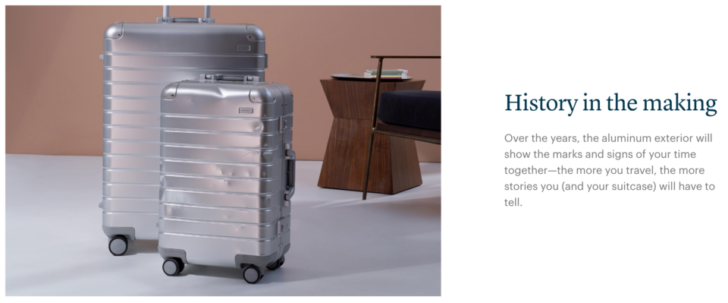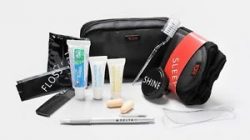Away makes the hottest, must-have luggage for the in-crowd. Those who want to be seen as hip and young usually have one of their minimalist carry-on bags wheeling behind them. So when Hyatt and American Airlines sent me one of their models to celebrate the new partnership between their loyalty programs, I was intrigued.
(In full disclosure, yes, I got a free suitcase. To the best of my knowledge it was a gift from American and Hyatt, not Away.)
But I am not easily swayed by the hip culture of today’s youth. I am not cool. I knew I wanted an Audi A4 when I read a review that said it was for boring, mid-level German bankers who don’t want to stand out. I do still like to try new things and had never owned a hard shell suitcase before. In the past I’ve usually had either a Victornix or Tumi soft shell model, and always with just two wheels that meant I had to tilt the suitcase over to pull it behind me.
Was this new Away luggage really so much better? Would I like having a hard shell design that, in theory, protects your belongings better but can’t expand as easily? Would I find the four wheels more comfortable than two? And what about all that aluminum? It costs more than polycarbonate, so is it worth the upgrade?
I have not been traveling much because my first son was born earlier this summer. However, his aunt was getting married at around the same time. After making sure mom and baby were comfortable at home with his grandmother to assist, I packed my suit and headed to California to walk my sister down the aisle.
Unwrapping
The big reveal was delayed when I opened the box and found a separate canvas bag. I first thought that seemed like an unnecessary amount of packaging, but in hindsight that canvas bag was probably meant to protect the finish of the metal suitcase if I were to check it at the airport. Let me say right now: The role of the suitcase is to protect the belongings inside. If you need a separate bag to protect the suitcase, you should find a different suitcase.
But that wasn’t going through my mind at the time. I tossed the canvas bag to the side and started exploring the suitcase in more detail. It’s similar to the Rimowa style that popularized aluminum luggage but definitely a bit more modern. It resembles the other Away luggage options that are made from polycarbonate plastic.
However, it’s relatively heavy at 10.7 lbs. The polycarbonate version weighs in at just 8.1 lbs. It’s not so bad when you have a smaller carry-on like this. The full dimensions are 21.5″ x 13.5″ x 9″, so it will easily fit in any airline’s overhead bin. But if you were to choose the larger and aptly named “Bigger Carry-On” or one of Away’s checked luggage options, I think the weight of the aluminum would start to become an issue.
Packing
The Away Carry-On is also a bit on the small size compared to my Tumi Alpha, even though it worked out well for this trip. I don’t think I could make it work for a longer vacation. By contrast, I’ve traveled for two weeks through Asia and Europe with just my Tumi Alpha, since replaced by the Tumi Alpha 2. (Yes, I did laundry along the way.)
I needed clothes for three nights, plus a suit, nice shoes, and space to bring home a bottle of Japanese whiskey. I brought a separate bag for my laptop and would bring the Away carry-on with me on the flight from Austin to Seattle. However, I would need to check the bag for the return trip due to the whiskey. I managed to make it all fit without any wrinkles thanks to some clever pockets and an interior design that is free of most obstructions.
It was particularly impressive that the suitcase came with a matching shoe/laundry bag. The central divider had multiple pockets, and there were other compartments that were completely removable if, like me, you prefer not to use packing cubes and the like. (I just try to think carefully about how I fold items and where I pack them.)
Travel
Once everything was packed, lifting the suitcase felt a bit like lifting a bowling ball. Not necessarily too heavy, but dense. Everything I needed was inside one small package, encased in a protective metal shell.
What was really impressive is that the bag was so easy to move. I could push it across the floor with a single finger. On a level surface I could even make it spin in one place with a single finger. It was the easiest, lightest bag to move across the room or the airport concourse as long as you kept it on all four wheels.
If you were to tilt it, like I do with my Tumi Alpha, it got heavier, and you definitely needed to tilt it to drag across the carpeted floor in my hotel room. I still thought it was a marvelously light piece of luggage and will consider a four-wheel bag in the future.
Unlike most luggage, Away’s products also come with an electronic battery pack for you to recharge your devices on the go. This battery can be easily ejected from the case by flipping up the lid and pushing down to release the spring. You’ll need to remove the battery if you are going to check your bag in the luggage hold. Inside the suitcase is a small bag of adaptors to recharge the battery, but I left this at home since it seemed unnecessary on a short trip.
I don’t normally need to recharge my devices when traveling, so this battery doesn’t offer much value to me, but I know others will think it’s important.
My flight was in first class on one of Alaska’s Embraer E-175 aircraft. These planes have limited overhead bin capacity on the port side, but my bag fit easily into the starboard compartment. No complaints here.
Checked Luggage
Despite the weight, which was offset by this bag’s remarkably smooth wheels, the only real concern I had about the aluminum body was the damage it might incur when checked in the cargo hold. I was not going to head home without a bottle of that whiskey.
Once I arrived in Austin, I waited at the baggage carousel to see what had happened. The bag had a few scratches, which I was expecting. Metal will scuff, and developing a rich patina is part of the charm that Rimowa advertises to its customers. However, I was not expecting the big dent at the top. If you’re going to lug around a big heavy bag made of metal, you’d expect it to survive nearly any insult. This wasn’t even a particularly large plane or a busy flight with lots of bags.
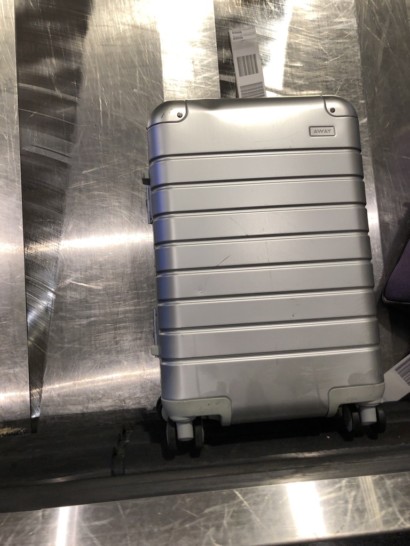
If you’re going to pay more for the aluminum edition (starting at $475), keep this experience in mind. After a single ride in the cargo hold I already have a big scratch and a dent. Even had I lovingly packed my suitcase in the canvas bag, that still wouldn’t have prevented the dent. I would much rather try my luck with the standard polycarbonate model for $225.
But that’s me. And my wife. She said some unprintable things I can’t write here and it’s not even her bag! On Away’s website, however, you will see a proud declaration that your aluminum suitcase will acquire signs of wear and tear to go along with all those great travel stories.
I’m sure Rimowa has the same problem. Just make sure you actually like the dented look before you buy.
Conclusion
In conclusion, there are a lot of things I like about this bag. It rolls great and is spacious inside. Though it struggles on carpet it is becoming more and more common to find hard flooring in public spaces and even hotel rooms.
While I am really not trying to look a gift horse in the mouth, the only real complaint I have is the aluminum. It’s heavy. It gets dents. I do like attractive designs, but I also like things that are functional. The aluminum is not functional. The polycarbonate options from Away are just as pretty and not nearly so fragile. If I were to buy another suitcase from Away (and I just might), I would recommend you save some money and buy one of those models instead.

